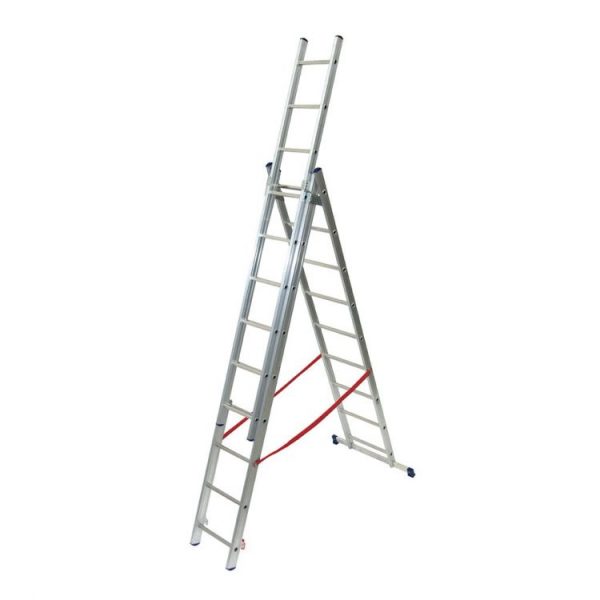Extending ladders are an essential piece of kit for working at height. Whenever you use any type of ladders and you’re working from height, there are things to be on the lookout for. It’s important to know how to use extending ladders to avoid accidents and injuries. The HSE falls from height statistics make grim reading. In recent years, falls from height have become the most common type of fatal accident. Around 50 people die as a result of a fall from height, and about 2,000 people suffer an injury.
We’re not trying to put you off getting up your ladder and getting your job done, we just want to help you stay safe! Here’s what to be on the lookout for when using extending ladders.
Firstly: What is an extending ladder?
An extending ladder is a fixed ladder that has two or more sections. One section raises above the other, which doubles the ladder’s height. Clips hold the sections in place.
What to be on the lookout for when using extending ladders
Choosing the right extending ladder for the job
To make sure you pick the right extending ladder, you need to consider a few things:
- How high will you be going?
- How much weight will the ladder need to carry? (this will include you plus any tools, materials, or kit you’ll be carrying with you).
- How much space is there around you and what sort of area will you be working in? Is there anything to actually lean your extending ladder against? Is the ground level and solid enough?
- Are there any hazards nearby, like electrical wires? If there are, avoid using aluminium ladders altogether and consider a fibreglass extending ladder.
Is your it in good working condition?
You should inspect your extending ladder every single time you use it. Never assume that it’s in good working condition. Check that there are no dents in the rungs and make sure the side rails aren’t bent or damaged. The rungs should be clean and free from anything that might cause you to slip.
Make sure the safety feet are in place and not damaged, and that the locking mechanisms work.
Have you set your extending ladder up properly?
Setting up an extending ladder is not just about propping it up against something. Here’s how to set up your extending ladder:
Lean your extending ladder at a 4:1 ratio:
For every 4 feet of wall or structure, the base of the ladder should be 1ft away. So, if you are using your ladder on a 16ft structure, divide this by 4, and the ladder should be 4ft away from it. This will make sure the ladder is steady and stop it from tipping backwards.
Look at the surface you’re setting the ladder upon:
If you’re on a hard surface like concrete, the safety feet on the bottom of the ladder should stay flat. On a softer surface tip the feet up and dig the tips into the ground to keep your ladder secure.
Are your extending ladders secure?
There are a few ways you can secure your ladder.
- You can tie the stiles to a secure point with straps or rope.
- Buy an extending ladder with a built-in stabiliser bar to widen the base and stop it from slipping.
- Get someone to hold the ladder for you if the other methods aren’t possible.
Is the base around clear?
You don’t want to go over on your ankle in a little ditch you didn’t know was there, or slip on some debris. Clear the area around the base of your ladder before you climb.
Do you know how to use your extending ladder safely?
Whether you’ve climbed a ladder one time or 100 times, it’s still a good idea to have a reminder of the safety rules.
You should have 3 points of contact with the ladder at all times, so either both feet and a hand, or both hands and afoot. If you have to carry tools or materials, carry them on a tool belt so you can stay in contact with the ladder at all times.
Before you climb, check the ladder is secure and stable, and never move or adjust a ladder if someone is using it.
It’s easy to forget some of the basic safety rules sometimes, especially if you’re in a rush to get a job done. Follow our tips to stay safe and avoid accidents and injuries.
If we have extended your interest in ladders (sorry for the pun), check out our blog for even more helpful tips and interesting articles.




